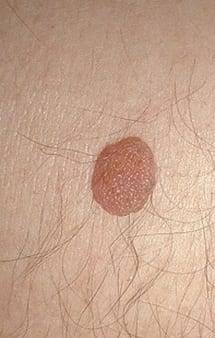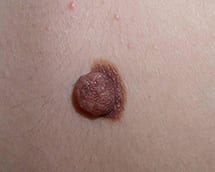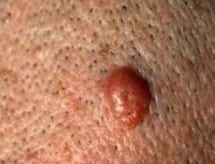Mole Removal
Compound Nevus, Dermal Nevus, Junctional Nevus, Benign Mole
Moles
- Can develop anywhere on the skin’s surface
- May be tan, pink, brown or even black in colour
- Are a collection of melanocytes.
- Melanocytes are the type of cell that give skin its colour
- Melanocytes also produce a tan in the skin
- Often become raised, get gradually larger with time, and become more pink
- Do not disappear spontaneously
- If you are not certain whether a mole is normal or not you should show it to your doctor
Removal:
- The skin adjacent to a mole is injected with a local anesthetic to numb the area
- The mole is removed and the base treated with a medication so that there is no bleeding
- Stitches are usually not necessary
- The removal is not painful
- After the procedure you may bathe normally
- For 2 weeks after the procedure, apply a small amount of antibiotic ointment, and change the bandage daily
- After a mole has been removed a crust or scab will form
- This will heal and leave a pink mark that will gradually fade.
- After the removal, there may be a residual white mark
- There is a small chance that the mole could grow back
- There is no cream at this time that will remove moles
- There is no way to prevent moles from developing
- Removal of benign (non-cancerous) moles is not covered by OHIP or private health insurance
- A referral from a doctor is necessary to make your first appointment
Moles can occur anywhere on the skin
Benign Mole – Easily Removed in the Office
Dermal Nevus – Easily removed in the office
What if you are interested to learn more?
If you would like to learn more please phone the aesthetic centre directly at (905) 549-7873 to book a free consultation with one of our knowledgeable technicians or



